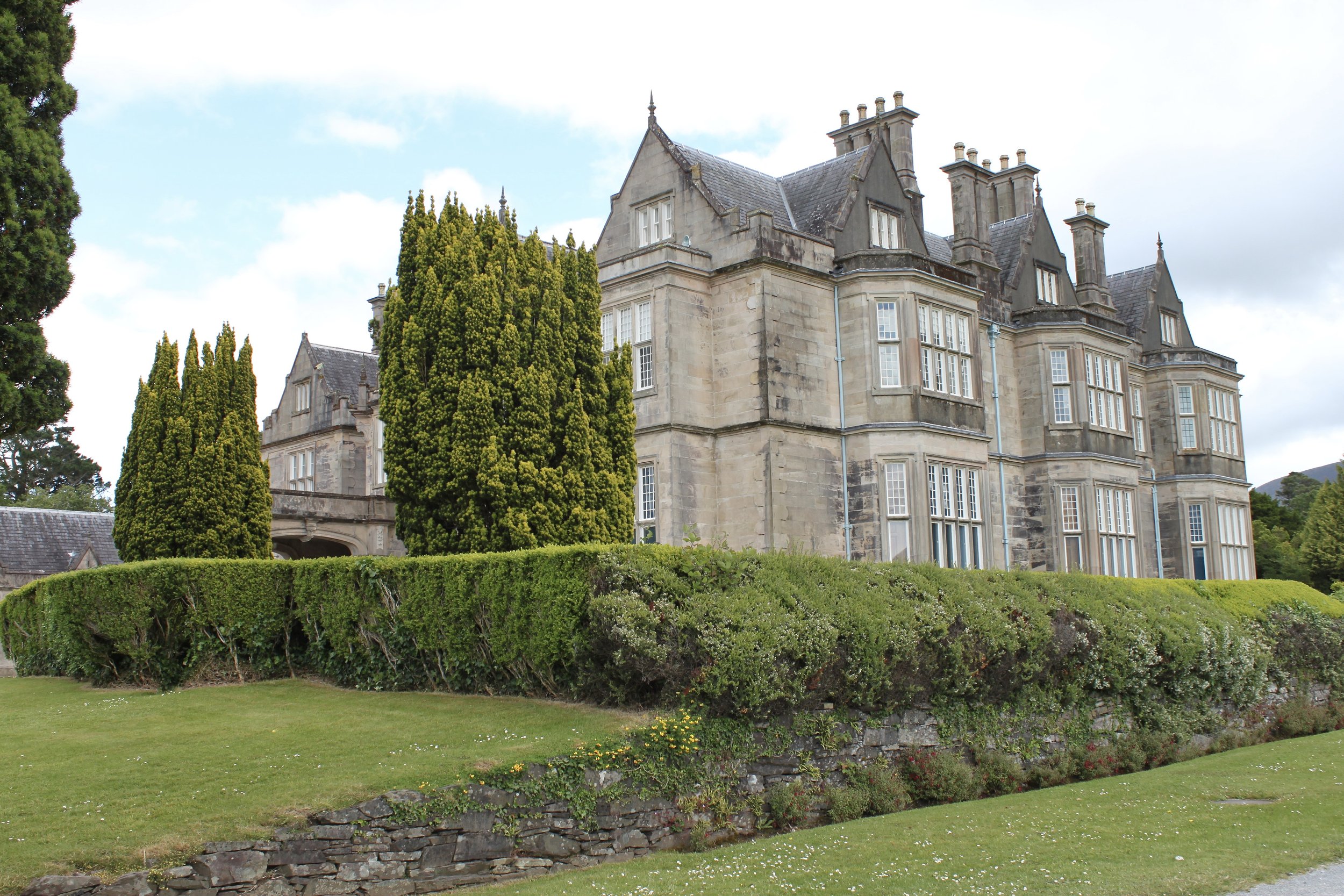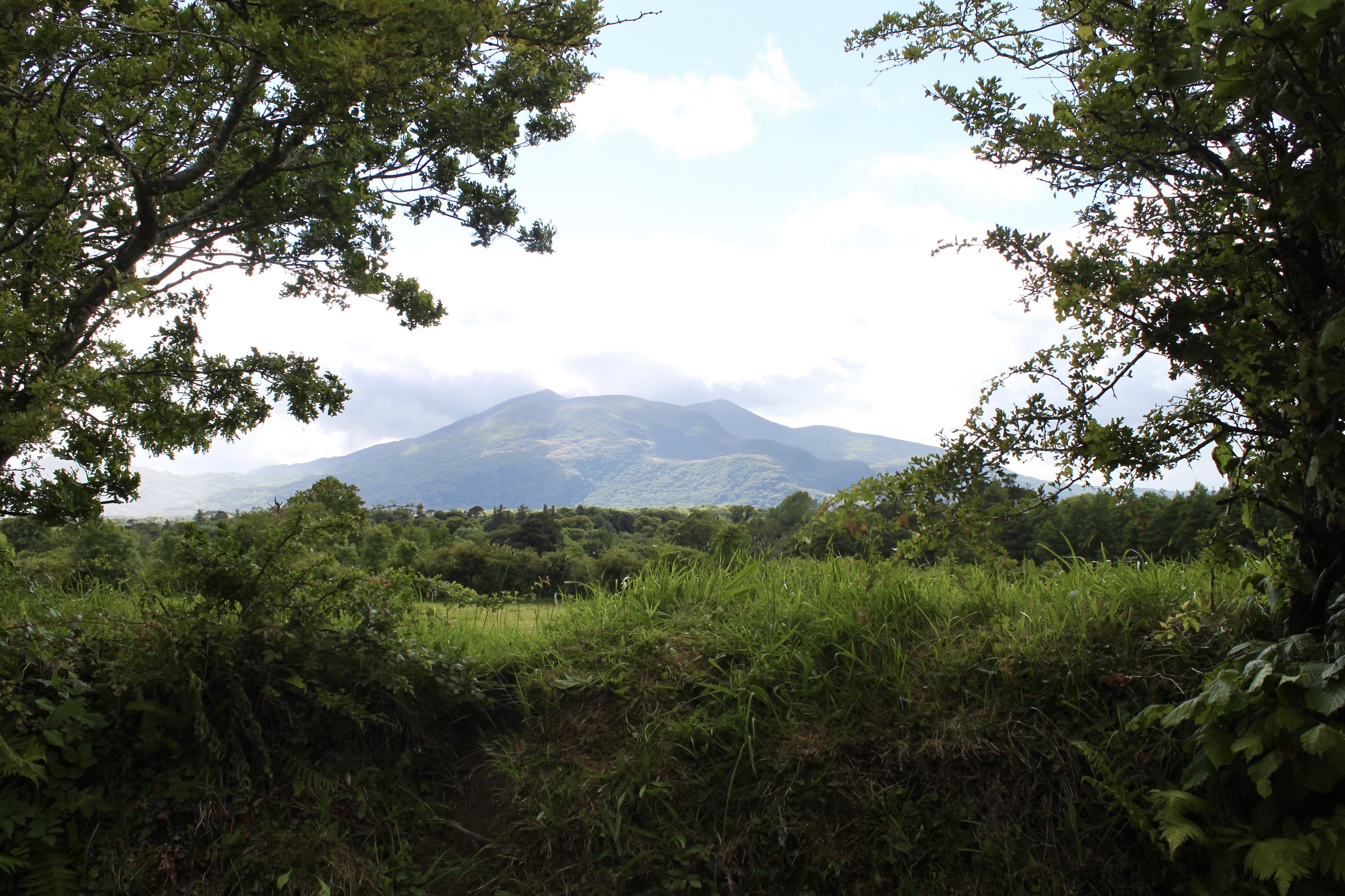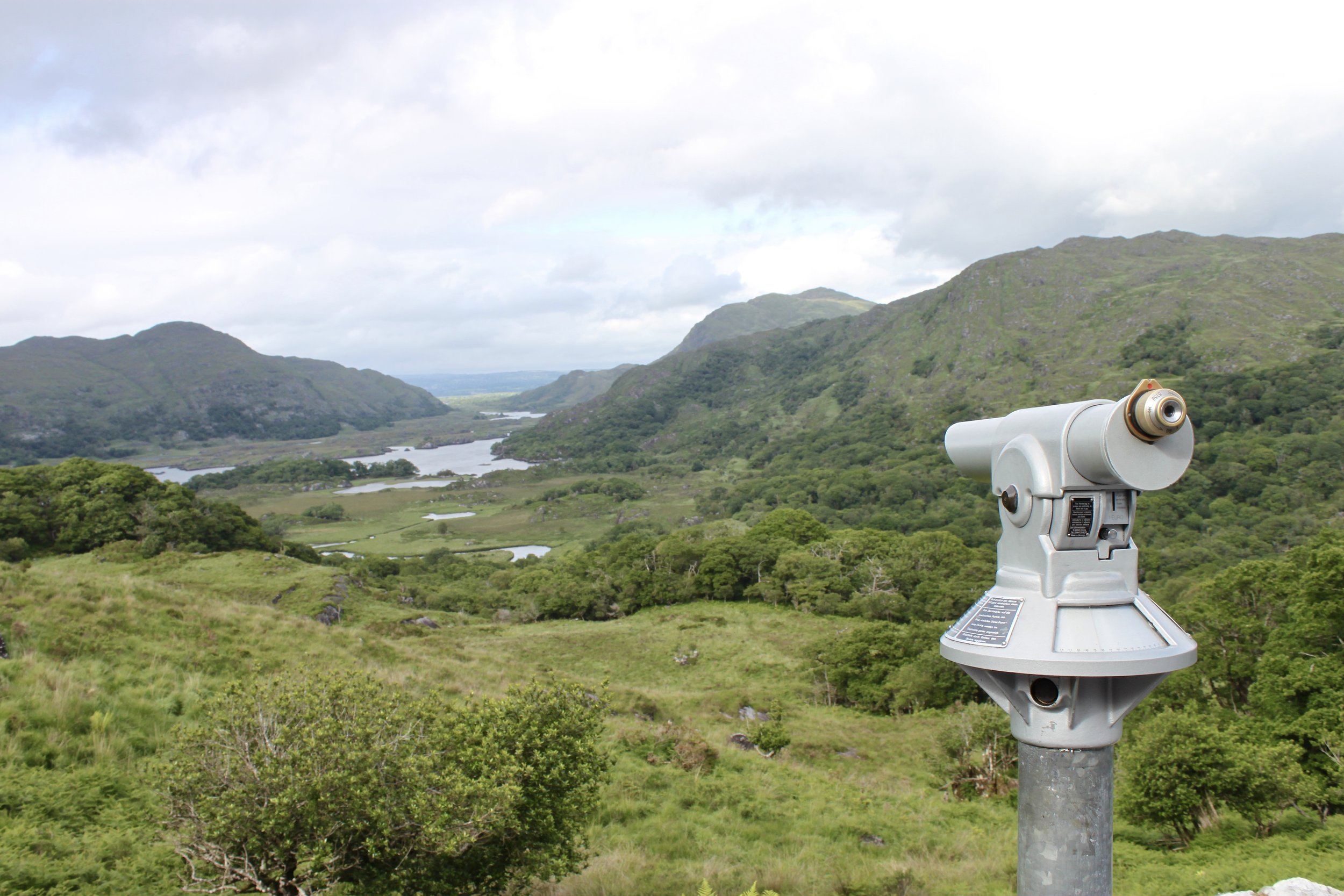RING OF KERRY MUST SEES
The Ring of Kerry is a circular route in County Kerry offering incredibly impressive monuments, scenic towns, mountains, cliffs, and more. The journey is 179km long (111 miles) and will take around 2.5 hours by car without stopping. However, there are plenty of destinations along the way to stop and see, so I highly recommend blocking off an entire day minimum (if not two or three or four) to enjoy all that the Ring of Kerry has to offer.
While you can drive in whatever direction you choose, it is advisable to drive the Ring of Kerry route in a clockwise direction, as tour buses are required to go counterclockwise. By driving clockwise, you can at least know that you won’t be behind a huge tour bus during your journey. And trust me when I say you will want to avoid as many problems as possible, because while the Ring of Kerry road is paved, it is also narrow and winding, with rock walls or cliffs that will closely flank your car. Always remember that you will be driving on the left-hand side, and that most areas of the Ring of Kerry road are not nearly big enough for two cars. If you zip around a bend, you risk running into another car. Go slow when the road in front of you is not visible, be aware of your surroundings, and get as far to the left as possible when another car is passing you. Please note that there are many stops along the Ring of Kerry, but the ones that I share below are just some of my personal favorites!
Killarney
This town is where the Ring of Kerry journey begins and ends! (However, please note that you can of course join the route at whatever point you like.) This town is dazzlingly clean, and has actually won various awards for its tidiness. Walk the pristine streets of Killarney and enjoy the many opportunities to shop and eat. In terms of things to see, I particularly love St. Mary’s Cathedral in town. In addition, the Cahernane House Hotel just outside the town centre is a wonderful place to stay. Click here to read more about how I would spend 24 hours in Killarney!
Cahernane House Hotel in Killarney
Muckross House & Gardens
Work commenced on this Victorian mansion in 1839 and was completed in 1843 for Henry Arthur Herbert and his wife, Mary Balfour Herbert. Muckross House is actually within Killarney National Park, one of the other stops I’d recommend on the Ring of Kerry, and it is an excellent place to explore the park from! However, do not skip exploring the interior of this gorgeous house. For me, it was fascinating to see all the bells strung up in the basement, where employees would listen for a bell that was tied to a particular room to know where they were needed. I also loved seeing the Muckross Traditional Farms that showcase small, medium, and larger working farms from the 1930s and 1940s. Muckross House also has gardens, a restaurant, and a shop, so I would block off some time to take advantage of all there is to see here!
Muckross House
Ross Castle
Ross Castle is a 15th century tower house said to have been built by Irish chieftain O’Donoghue Mór. Legend has it that he still sleeps under the waters of Lough Leane, the lake that Ross Castle looks out over. If this story doesn’t scare you off, you can sail around Lough Leane on a boat cruise that leaves from Ross Castle!
Ross Castle
Killarney National Park
Technically many stops on the Ring of Kerry (Muckross House, Ross Castle, Killarney, and more) are set in Killarney National Park, but I am adding the park separately because it deserves its own spot in this article, especially because it is considered by many as the “Jewel in Kerry’s crown.” The park spans approximately 10,200 hectares, or 26,000 acres, and became Ireland’s first national park when Muckross Estate was donated to the Irish Free State in 1932. Then in 1981, it was recognized by UNESCO as a Biosphere Reserve. Currently, the park is open for tourism all year around. There is a visitor centre at Killarney House, as well as bathroom facilities, and plenty of car park options.
Killarney National Park
Ladies View
Ladies View is a scenic viewpoint on the Ring of Kerry route. The name is in reference to Queen Victoria’s ladies-in-waiting who all loved the view from this spot during a trip to Ireland in 1861. This spot is about 19km, or 12 miles, from Killarney, and if you are indeed coming from town, you will first hit a small car park across from the Ladies View Gift Store Café Bar & Roof Terrace. If there are no spots to park, continue down the road just a bit further to another small parking area. After you have taken in the gorgeous view, be sure to take a look around while backing out of your parking spot, as there are blind spots!
Ladies View
Gap of Dunloe
The Gap of Dunloe is a mountain pass that was forged by glacial flows between two mountains: the Purple Mountain and the MacGillycuddy Reeks. The river that runs through this gap is called the river Loe, which is where we get the name Gap of Dunloe! The Gap starts at Kate Kearney’s Cottage, where there is also plenty of parking. Here is where you can start your hike of the Gap, which is approximately 11km from north to south. If you do not want to hike that much, consider walking to the old bridge known as the “Wishing Bridge,” and then turning back. People say that wishes made on this bridge really do come true! If you do not want to hike at all, you can always hire a jaunting car (horse-drawn wagon) to bring you around and still enjoy the picturesque nature all around you!
Gap of Dunloe
Kenmare
Kenmare is a super small town in County Kerry, and a lovely little spot to stop along your Ring of Kerry route. We absolutely love Mulcahy’s for dinner, and my favorite spot in Kenmare is the Kenmare Stone Circle. This circle is the biggest stone circle in the south west of Ireland, made up of 15 heavy boulders. Stone circles were built during the Bronze age for ritual and ceremonial purposes. The circle is shrouded in mystery, as it seems that the type of stone that the 15 boulders are comprised of is not native to Kenmare, and would have been taken from miles away. Another magical element of the circle is that there are two Hawthorn trees next to the circle. In Celtic mythology, these trees are sacred, and symbolize love and protection. These trees are also known as fairy trees, as fairies live under these types of trees as its guardians. People do not cut down Hawthorn trees, as they are seen as a meeting place between these fairies and mortals. When you visit the Kenmare Stone Circle, you will see little notes on the two trees. People leave wishes and prayers, in the hope of good fortune. Grab a little note from the entrance to write down your own wish and attach it to one of the trees!
Kenmare Stone Circle (shown here with one of the Hawthorn trees standing by)
Kerry Cliffs
I am not sure why more people aren’t heading over to the Kerry Cliffs, because these cliffs offer incredible views of the Atlantic and of the Skellig Rocks, which are one of only a couple of UNESCO World Heritage Sites in Ireland. When you arrive, there is a car park, a restroom, and a little booth where you have to pay to walk 10 minutes to the cliffs (as the Kerry Cliffs are on private property). Allot at least one hour to admire the views, and maybe longer if you’d like to stop and watch for birds!
Kerry Cliffs
Portmagee
Portmagee is a very small town and there isn’t too much for a tourist to do in the town centre itself, but it is on the list because from Portmagee you can hop on a boat and make your way out to Skellig Michael (or take a quick drive to the Kerry Cliffs, mentioned above).







